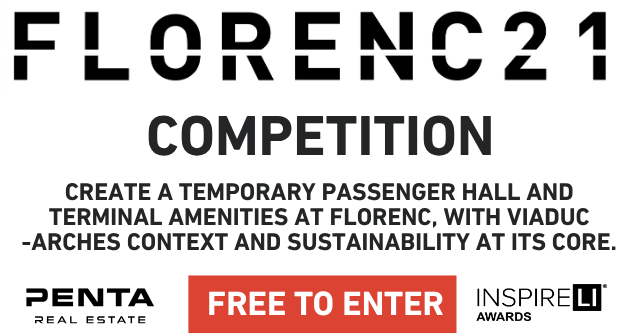Orangery and papilonium Prabos
Idea projektu
Některé místnosti musely být zachovány - konkrétně nová plynová kotelna, dvě trafostanice a elektrické rozvodny. Budova se v současnosti vyznačuje vysokým podílem prosklené fasády, která se stala klíčovým zdrojem inspirace. Rozhodl jsem se navázat na stávající vzhled a objekt znovu využít jako oranžerii a papilion. Společnost by mohla těžit ze zvýšené návštěvnosti a s tím spojené reklamy. Zároveň budova nabízí prostor pro pořádání konferencí a dalších společenských akcí, a to nejen pro zaměstnance, ale i pro veřejnost.
Popis projektu
Urbanistické řešení: Budova bývalé kotelny se nachází na západním okraji areálu společnosti PRABOS. V současné době je přístup do areálu možný pouze přes hlavní vrátnici, což vzhledem k nové veřejné funkci budovy není vhodné. Docházelo by tak k nežádoucí interakci mezi návštěvníky a vnitřním provozem společnosti. Z tohoto důvodu navrhuji vytvoření nového vstupu z ulice přiléhající k parku. Toto řešení by umožnilo zcela oddělit logistiku společnosti a veřejný přístup do oranžerie, čímž by se předešlo jakýmkoli konfliktům mezi uživateli. Vyžadovalo by však demolici stávajícího objektu a vybudování šest metrů široké přístupové cesty pro osobní vozidla, což není ideální. Vedle bývalé kotelny jsem navrhl příjezdovou komunikaci a parkovací plochu, stejně jako obslužné komunikace pro technické zázemí, které zůstávají v původním stavu. Architektonický návrh: Při návrhu budovy jsem se snažil zachovat její původní charakter. Nejvýraznějšími prvky jsou bezpochyby souvisle převýšený prostor ve druhém patře sahající až ke střeše a prosklená fasáda. Tyto dva prvky vytvořily ideální vnitřní prostředí pro pěstování vyšších druhů rostlin. V interiéru jsem se snažil zachovat vizuální otevřenost a umožnit průhledy mezi jednotlivými úrovněmi a hlavním prostorem oranžerie a papilionia. Inspirován fasádou jsem do interiéru zavedl podobně členěné prosklené plochy, čímž vznikl prosluněný, ucelený prostor, který zachovává vizuální kontinuitu návrhu. Snažil jsem se také o sjednocení fasády odstraněním zbytečných otvorů. Na severozápadní fasádě jsem navrhl podlouhlé okno napojené na jednoduchý světlík. Naopak jihovýchodní strana je bez oken, protože se zde nacházejí místnosti elektrických rozvodů a konferenční sál. Jako poslední výrazovou vrstvu jsem na fasádě navrhl streetartovou kompozici, která odráží novou funkci budovy. Prostorové uspořádání: Budova je rozdělena do čtyř nadzemních podlaží. V přízemí se kromě zachovaných technických prostor nachází recepce s halou a toaletami. Hlavní vstup se nachází na severovýchodní straně, v sousedství schodiště vedoucího do vyšších pater. Vedle hlavního vchodu je samostatný vchod pro zahradníka s přímým přístupem do skladovacích prostor a výtahem. Ve druhém patře se nachází oranžerie a papilion, neboť zde se nachází již zmíněný prostor s dvojitou výškou, který zasahuje až na střechu. V celém prostoru jsou rozmístěny květináče různých velikostí a místa k sezení pro návštěvníky. Nad původními betonovými sloupy zachovanými z přízemí, které sahají až do vyšších pater, stojí velký pomerančovník. Ve třetím patře se nachází víceúčelový sál s toaletami a skladem nábytku. Součástí této úrovně je také galerie s výhledem na oranžerii, která návštěvníkům nabízí vizuální propojení mezi patry. Čtvrté patro obsahuje další část oranžerie s menšími rostlinami. Toto patro se nachází na stejném místě jako původní zásobníky uhlí, z nichž jeden byl zachován a nyní funguje jako koryto pro nově vytvořený vodní prvek
Technické informace
Ocelový rám, který tvoří původní konstrukční systém budovy, zůstal zachován. Sloupy o průřezech 200 × 200 mm a 350 × 200 mm jsou uspořádány v pravidelném šestimetrovém rastru. Jedinými přidanými prvky je konstrukční systém schodiště a galerie ve třetím patře, všechny ostatní prvky zůstávají původní. Nové zděné příčky jsou zavedeny pouze v přízemí a ve třetím patře. Kvůli požadavkům na údržbu a čištění bude v celé budově odhalená betonová podlaha z monolitické betonové mazaniny. Prosklenou fasádu bude nutné vyměnit, její vzhled a materiálový charakter však zůstanou zachovány. Budova bude rovněž vyžadovat zateplení a novou bílou omítku.


